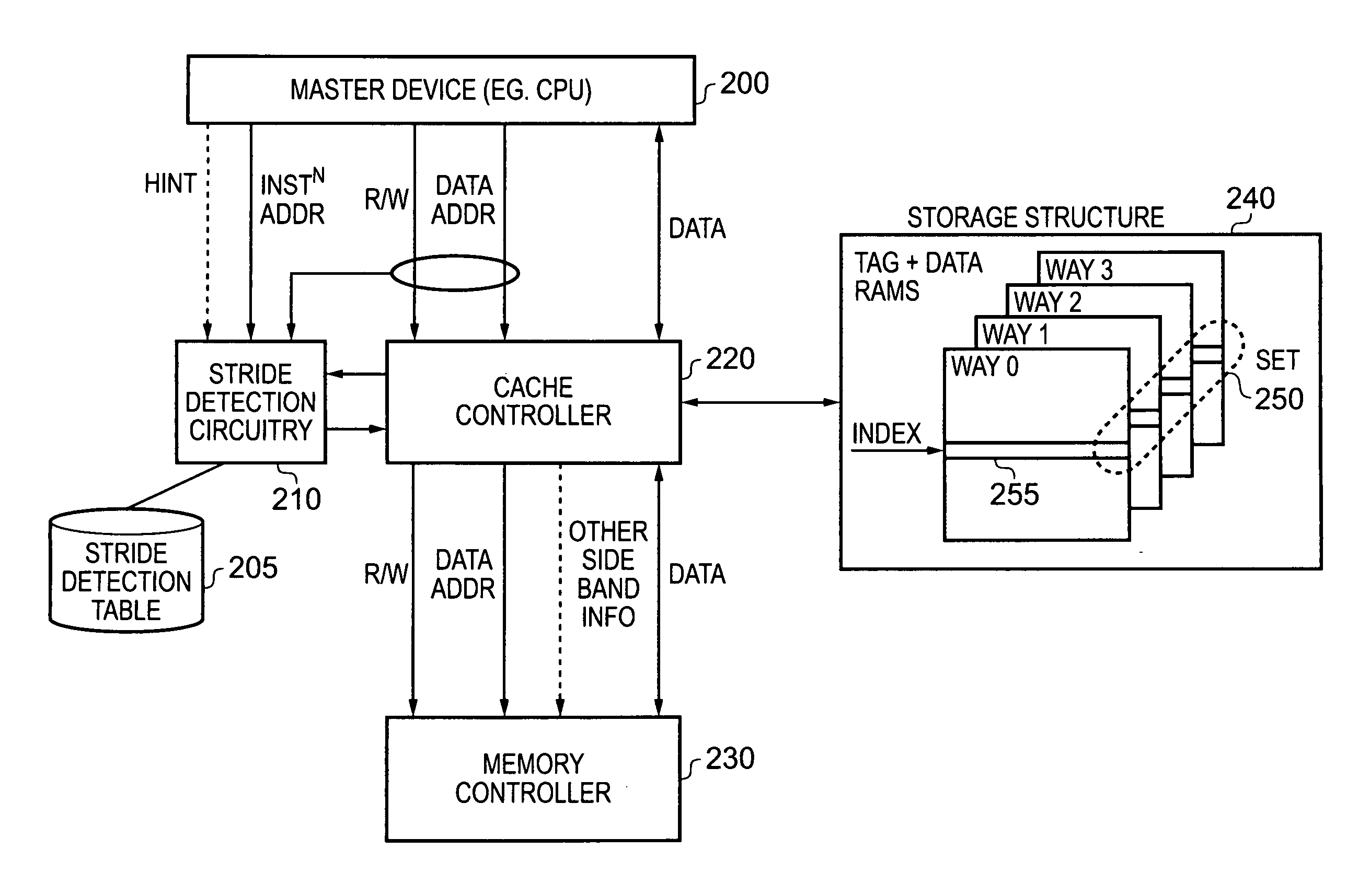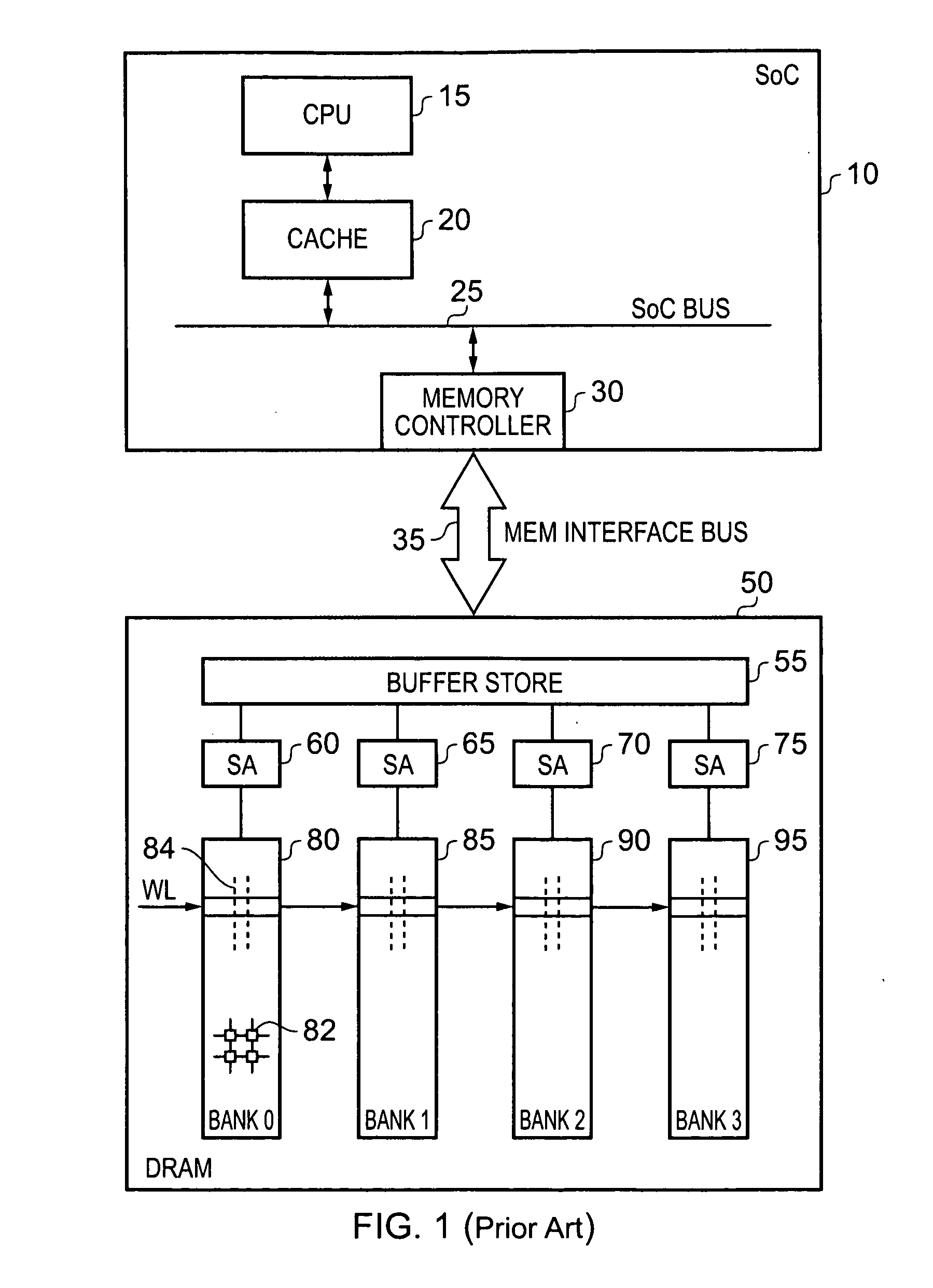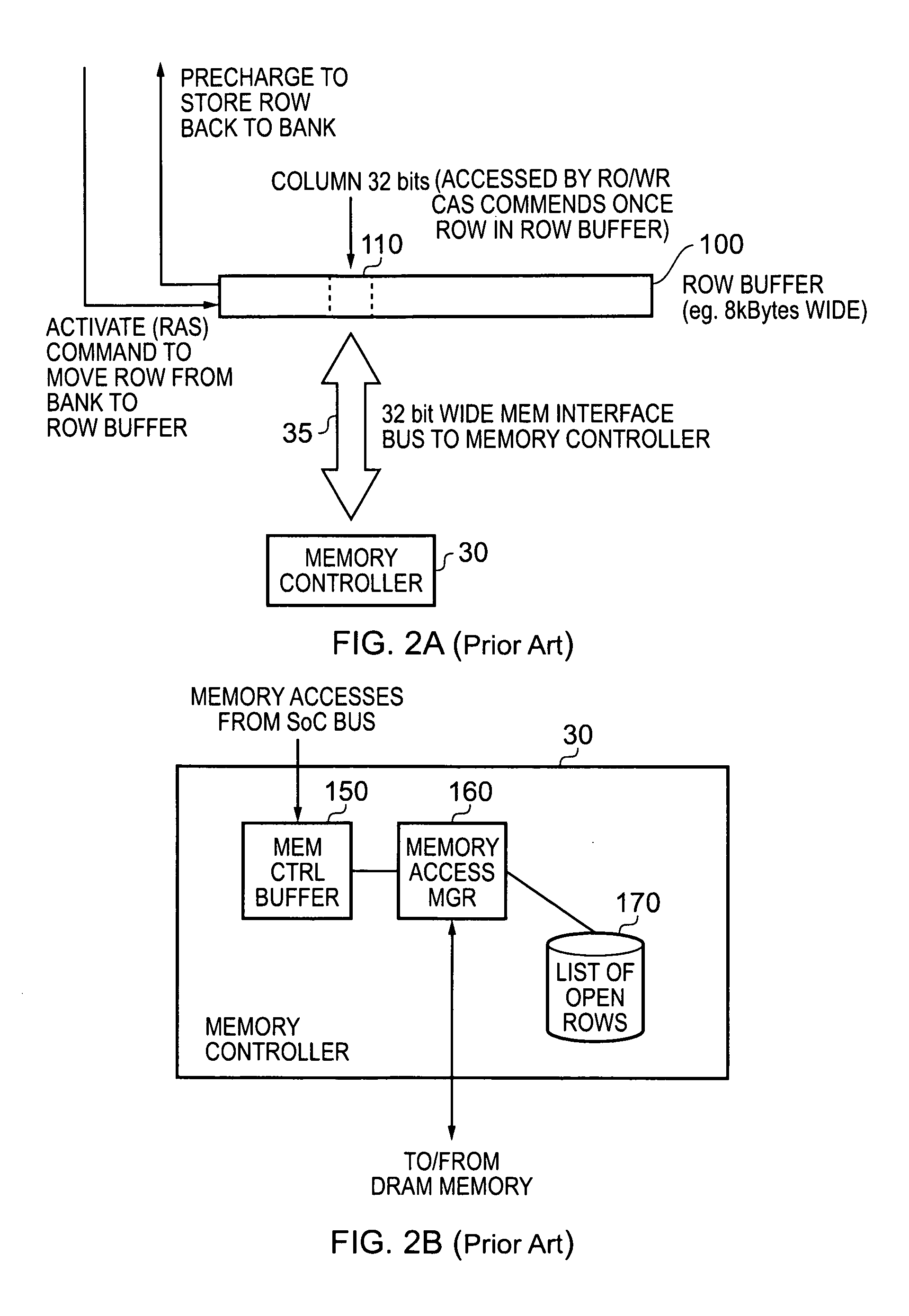Cache device for coupling to a memory device and a method of operation of such a cache device
a memory device and cache technology, applied in the direction of electric digital data processing, instruments, sustainable buildings, etc., can solve the problems of inefficiency problems, poor page reuse in the memory controller interfacing to the memory device, and memory typically has a limit on the number of pages, so as to achieve the effect of improving accuracy
- Summary
- Abstract
- Description
- Claims
- Application Information
AI Technical Summary
Benefits of technology
Problems solved by technology
Method used
Image
Examples
Embodiment Construction
[0082]FIG. 4A is a block diagram illustrating a data processing apparatus in accordance with one embodiment. The various elements shown in FIG. 4A may in one embodiment reside within a SoC, with the memory controller 230 providing an interface from the SoC to a memory, in one embodiment the memory being a DRAM such as the DRAM 50 shown in FIG. 1. As shown in FIG. 4A, a master device 200, for example a CPU, is coupled with the memory controller 230 via a cache structure consisting of a cache controller 220 and the storage structure of the cache 240. In one embodiment, the storage structure 240 takes the form of an n-way set associative storage structure, in the particular example illustrated the storage structure being a four-way set associative storage structure. Typically, tag and data RAMS will be provided for each way, and when the master device 200 issues a request for data, a portion of the data address output by the master device will be used to derive an index into the cache....
PUM
 Login to View More
Login to View More Abstract
Description
Claims
Application Information
 Login to View More
Login to View More - R&D
- Intellectual Property
- Life Sciences
- Materials
- Tech Scout
- Unparalleled Data Quality
- Higher Quality Content
- 60% Fewer Hallucinations
Browse by: Latest US Patents, China's latest patents, Technical Efficacy Thesaurus, Application Domain, Technology Topic, Popular Technical Reports.
© 2025 PatSnap. All rights reserved.Legal|Privacy policy|Modern Slavery Act Transparency Statement|Sitemap|About US| Contact US: help@patsnap.com



